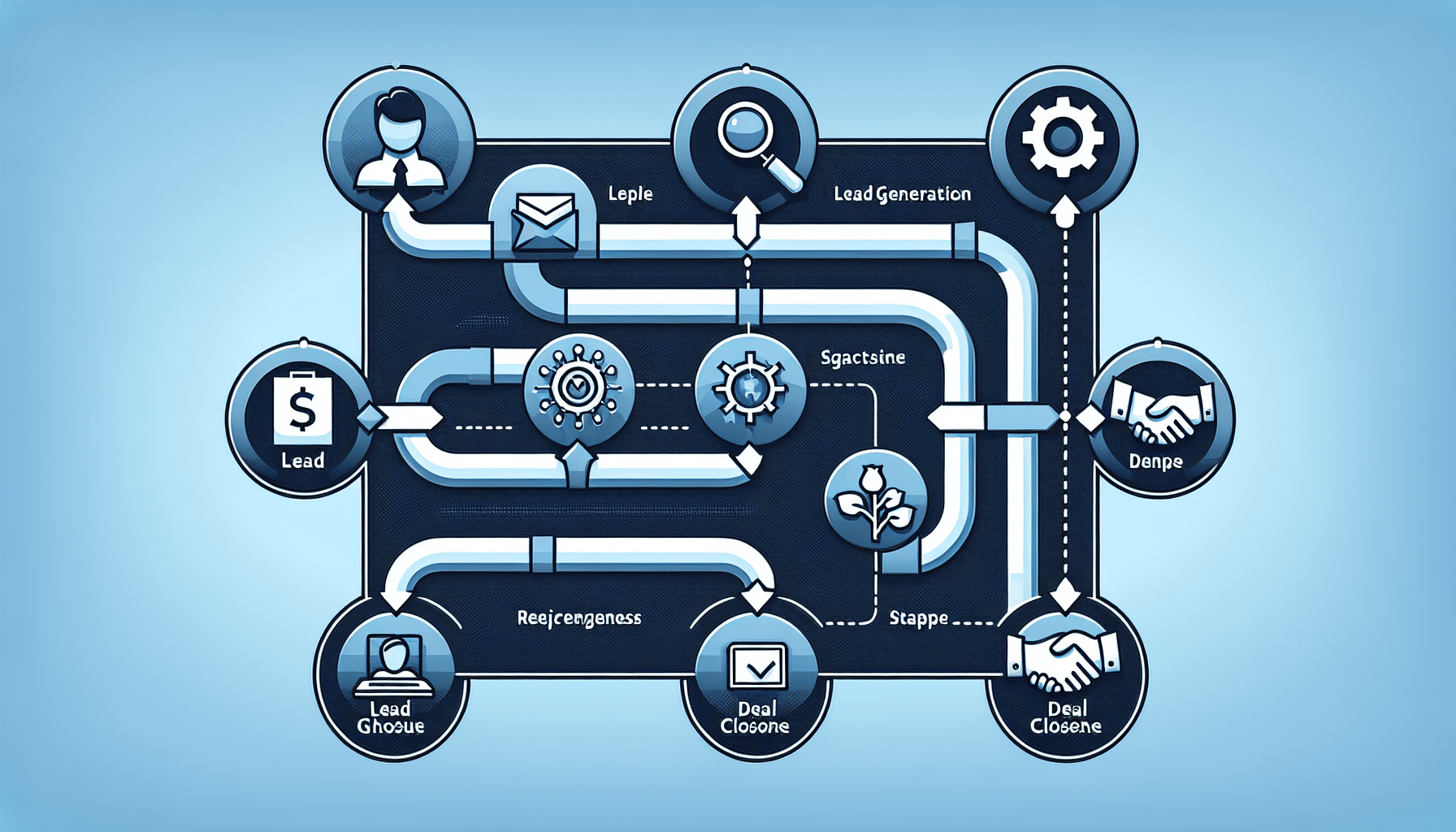What is the B2B Sales Process?
Have you ever wondered what differentiates successful companies when selling their products or services to other businesses?
Understanding the B2B sales process could be the secret ingredient you’ve been searching for. Just like making a perfect omelette, the right ingredients combined in just the right way can yield delicious results. This article will give you insights and practical advice about the B2B sales process and how having a structured approach can lead to better outcomes for your sales efforts.
This image is property of images.unsplash.com.
Understanding the Sales Process
The sales process is essentially a roadmap that guides your sales team from the initial contact with a potential client to closing a deal. Think of it as your trusty GPS; without it, you will wander and miss your destination.
Why It’s Important to Have a Sales Process
Having a well-defined sales process is crucial for several reasons:
- Consistency: A defined process ensures that every team member follows the same steps, making outcomes more predictable.
- Efficiency: When sales reps know what to do next, they spend less time in the dark and more time engaging with prospects.
- Performance Measurement: A clear process allows you to identify which steps are working and which aren’t. This information can be invaluable for training and improving your sales strategy.
In summary, a structured sales process is like a well-tuned engine; it allows your business to run smoothly and operate at peak performance.
The B2B Sales Process Explained
The B2B (business-to-business) sales process has unique characteristics compared to B2C (business-to-consumer) sales. In B2B sales, there are usually multiple stakeholders involved, larger transaction amounts, and longer sales cycles. Understanding each step in this process can help you plant the seeds for sales success as you engage with other companies.
Stages of the B2B Sales Process
The B2B sales process generally consists of several key stages. Let’s break them down:
| Stage | Description |
|---|---|
| 1. Lead Generation | Identifying potential clients who might be interested in your product or service. |
| 2. Lead Qualification | Evaluating leads to determine if they are a good fit for your offerings. |
| 3. Needs Assessment | Engaging with leads to understand their needs better. |
| 4. Proposal Creation | Crafting a tailored proposal based on the assessed needs. |
| 5. Negotiation | Discussing terms and pricing and addressing any objections. |
| 6. Closing the Deal | Finalizing the agreement and securing the sale. |
| 7. Follow-up and Support | Providing ongoing support and seeking opportunities for future sales. |
Each stage has distinct characteristics that need your attention, like how an author revises drafts until they get everything just right.
1. Lead Generation
Lead generation is the first step in the B2B sales process, and it’s essential because, without leads, you have no one to sell to. Think of it like fishing; the more lines you cast, the higher your chances of catching something. There are numerous methods for generating leads:
- Networking Events: Attending industry conferences where potential clients hang out.
- Email Campaigns: Leveraging your existing email list to introduce your offerings.
- Social Media: Using platforms like LinkedIn to connect with business professionals.
Generating leads is like planting seeds in a garden; not every seed will sprout, but with the right conditions, many will blossom into fruitful connections.
2. Lead Qualification
Lead qualification allows you to narrow your focus to the most promising prospects. Not every lead will convert into a client, so ask yourself some crucial questions:
- What is the potential client’s budget?
- Do they need your product or service?
- Who are the key decision-makers involved?
By answering these questions, you can prioritize your leads and invest your time wisely. You wouldn’t spend hours researching a client who isn’t a good fit, just like you wouldn’t invest in a new lawnmower without knowing if you have grass to cut.
3. Needs Assessment
Once you’ve qualified your leads, the next step is to ascertain their needs. This phase is fundamental because it informs how you’ll position your solution. Direct conversation is key here; think of it as having a friendly chat over coffee.
During this time, take the opportunity to ask open-ended questions like:
- What challenges are you currently facing?
- How are you currently addressing these challenges?
- What does success look like for your organization?
By listening actively and discerning their unique pain points, you can become a trusted advisor instead of just another sales rep trying to push a product.
4. Proposal Creation
With insights from your needs assessment, you’ll craft a proposal that speaks directly to the prospect’s requirements. Ensure that your proposal isn’t just a generic template; it should be tailored and reflect your understanding of their business.
A well-crafted proposal should include:
- A straightforward solution that addresses their needs.
- Pricing options that result in a win-win scenario.
- A timeline that outlines the steps you’ll take together.
Think of it as making a customized gift – the more thought you put into it, the more the recipient will appreciate it.
5. Negotiation
Negotiation can be tricky, but it’s also an opportunity to forge a deeper relationship with your prospect. You’ll discuss objections, pricing, and contractual terms during this stage.
To ease the negotiations, make sure you:
- Stay flexible and open to compromises.
- Be prepared to justify your pricing by highlighting the value you deliver.
- Keep lines of communication open and encourage dialogue.
Negotiation can feel like a dance; with careful steps and mutual understanding, you can find a rhythm that works for both parties.
6. Closing the Deal
This is the moment everyone has been waiting for – closing the deal. It’s essential to have a clear process during this stage to ensure everything goes smoothly.
Some effective closing techniques include:
- Summarizing: Recap the key points discussed and confirm agreement on both sides.
- Trial Closing: Ask questions that prompt the prospect to commit, like “Does this look good to you?”
- Creating Urgency: Highlighting a limited-time offer can encourage quicker decisions.
Securing a commitment should feel celebratory. Like closing on your dream home, it’s the culmination of hard work, and it’s okay to take a moment to appreciate that victory.
7. Follow-up and Support
Just because you’ve closed the deal doesn’t mean your job is over; customer support is critical in building lasting relationships.
In this stage, you should:
- Reach out shortly after the sale to ensure satisfaction.
- Provide resources that help your clients get the most out of your product or service.
- Stay in touch for potential upselling or cross-selling opportunities.
A good follow-up is like tending to a blooming garden; it’s essential for the continued health of your relationship and can yield opportunities for future sales.
This image is property of images.unsplash.com.
Measuring Sales Process Effectiveness
Improvement is crucial for sustainability in any business. Regularly assessing the effectiveness of your sales process can provide valuable insights. What’s working well? What areas need refinement?
Key Performance Indicators (KPIs)
Measuring specific metrics can help you gauge success. Here are a few KPIs you should keep an eye on:
| KPI | Description |
|---|---|
| Conversion Rate | The percentage of leads that convert into sales. |
| Sales Cycle Length | The average time taken from lead generation to closing. |
| Opportunity Win Rate | The percentage of opportunities that result in a sale. |
| Customer Satisfaction Score (CSAT) | A measure of how satisfied customers are with your service or product. |
Collecting and analyzing this data allows you to adjust your strategies, like a chef fine-tuning a recipe for optimal results.
This image is property of images.unsplash.com.
Conclusion
Understanding the B2B sales process isn’t just about knowing the steps; it’s about embedding that knowledge into your team’s culture and practices. By having a structured approach, you can create a smooth journey for your team and clients.
Every stage in the sales process has its purpose, just like every ingredient in a recipe contributes to the final dish. Tracking the journey and making necessary adjustments creates a roadmap to success that can elevate your sales results. So, are you ready to refine your B2B sales process and watch your sales take off? With a little effort, you’ll be on your way to becoming a sales virtuoso.



